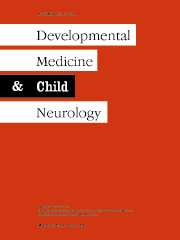Article contents
Fetal and infant movements and the young nervous system
Published online by Cambridge University Press: 19 June 2006
Extract
Historically, observation of infant behaviour has been fundamental to the understanding of developmental neurology and ontogenetic adaptation. Darwin's account of his infant son's development is an evocative example. More recently, assessment of the quality of spontaneous general movements (GM) in the fetus and young infant has advanced insight into the development and integrity of the nervous system. How can these observations contribute to the diagnosis of neurodisability? Does this model have useful clinical applications?
- Type
- Editorial
- Information
- Copyright
- 2006 Mac Keith Press
- 2
- Cited by


